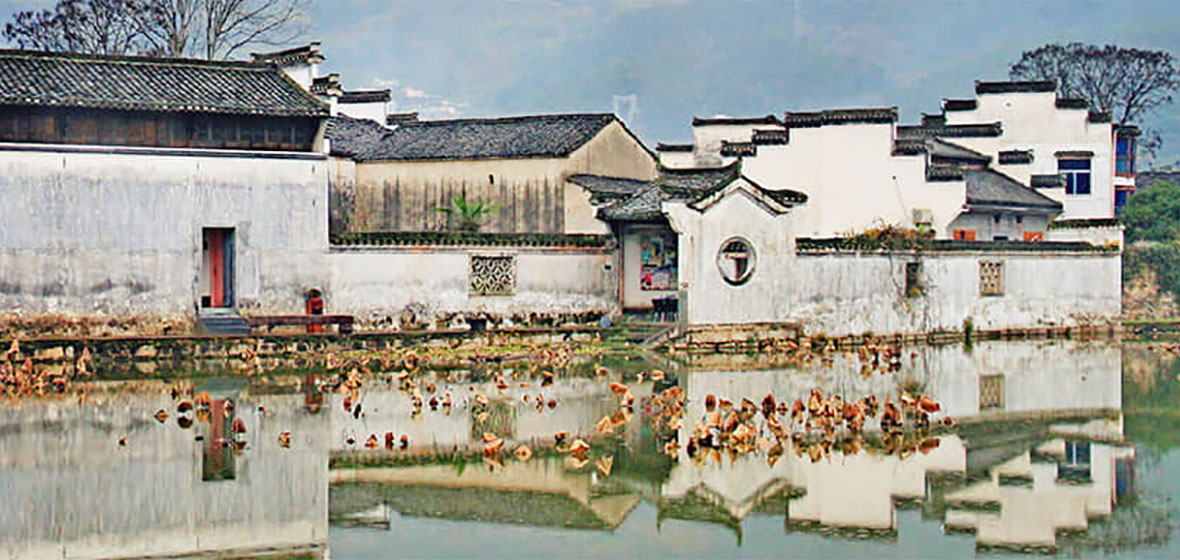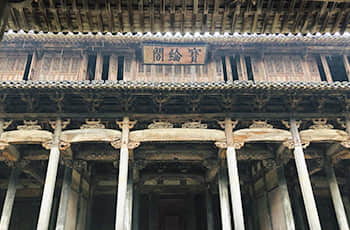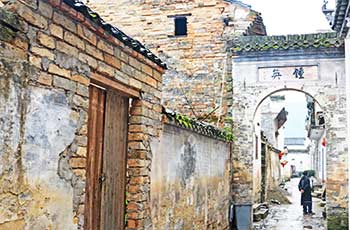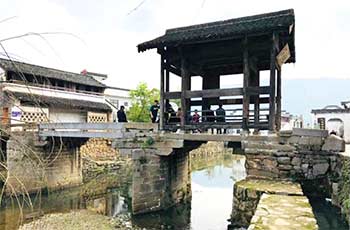Chengkan Village

Chengkan is located at the foot of Mt. Huangshan. It is neighbor to She County in the east, to Qiankou Town in the south, to Nanxi Nan Town and Qiashe Country in the west, and to Fuxi Country in the north. The whole village is arranged according to the theory of "the Eight Diagrams" in the I Ching (also Yi Jing in Chinese), or ‘Classic of Changes’. There are over 150 examples of architecture built during the Song, Yuan, Ming and Qing Dynasties, of which 49 are listed as national level protection relics. Chengkan is surrounded by mountains and bamboo forest. Tourists visit Chengkan for both natural and cultural reasons. Liu Haisu, a prominent twentieth-century Chinese painter once remarked that a visit to Chengkan should be included in people's itinerary for a Mt. Huangshan tour. As Hui Style dwellings are the top Chinese dwellings, the design of these dwellings is one of the best Hui style works. The blessings indicated in Chengkan are expected to bring good luck to travelers.
- Chinese Name: 呈坎 Chéng kǎn
- Duration: 5-6 hours
- Entrance fee: RMB 102 per person
- Opening hours: 7:30-18:00
- Address: 40 miles south of Mt. Huangshan, between Ling Mountain and Feng Mountain, Chengkan Town, Huizhou District, Huangshan City, China.
- Best time to visit: all year around
- How to get there: Take the Tunxi-Chengkan coach at Huangshan Scenic Spot Bus Station. It takes half an hour to get there.
- Daily shifts: 8:00, 10:00, 14:00 & 16:00 Self-drive route: For Hefei (Anhui's capital) to Tunxi, drive on G205 Expressway. Exit G205 at Qiankou Town. Turn right and drive along the second turning till the sign of Kancheng Scenic Area appears at the crossing of Foziling Road. Drive on and reach Kancheng government. Turn right and drive to Kancheng.
Highlights of Chengkan
These three-story buildings in the Ming Dynasty were the real skyscrapers. And the earlier buildings from the Song and Yuan Dynasties can also be found there. Baoguan House is probably one of the top relics among its peers in all neighboring Hui Style ancient villages. It is considered by domestic and foreign experts as the "Museum of Chinese Ancient Buildings".
 Baolun House
Baolun House 1. Baolun House
Baolun House is a national level protection relic. Its original name is Zhenjin, Mr. Luo Shudong Shrine. As the highest point of Kancheng, tourists can see clouds covering Tiandu Peak and Lianhua Peak of Mt. Huangshan. Baolun House resembles the essence of shrines. The stone carving and wooden carving are extremely beautiful with the paintings over the beam showing vivid colorful patterns.
2. Yanyi Hall
The hall is a two-part two-house hall that was constructed in the Ming Dynasty. The three-story building is a Hui Style dwelling. It retains the precious architectural styles from the Song and Yuan Dynasties The first story of the second house is the living space for the owners and the second story of the second house is for their children. The servants’ rooms, study and accounts room are on the third story. This simple, unique and grand hall is delicately and firmly constructed. It is really worthy of a extended time of observation.
 Zhongying Bell Tower
Zhongying Bell Tower 3. Zhongying Bell Tower
The bell tower was used by the house of Luo Yinghe, the then vice minister of the central government in the Ming Dynasty. Later, the bell tower was used for the public good for the village.
4.Changchun Sacred Shrine
The Sacred Shrine was relocated here during the short South Song Dynasty. It is a worship place for the god of the land and the god of crops. It looks really ancient.
5.Luo Chunfu's House
It was constructed in the Qing Dynasty. It is also called ‘Tycoon's Mansion’. It is different from the Ming Style constructions in that the gate is made of polished granite and polished black bricks. Embossments have been made on them. The headwalls' overhangs and cornices are designed for showing the family property. All doors, windows, beams and pillars have delicate woodcarving.
 Huanxiu Bridge
Huanxiu Bridge 6.Huanxiu Bridge
This is a main road to connect Xidong Street and Qianhou Street built in the Yuan Dynasty. As a change in the river channel has flooded two of them, it is considered a three-hole arched bridge.
Tips:
1. Recommended route: Entrance – Shuikou (best place to take pictures) – Xiawu -Yanyi Hall – Luo Chunfu's House – Zhongying Bell Tower (one can get lost here) – Huanxiu Bridge-Changchun Sacred Shrine – Exit.
2. Fengshui Culture Tourism Festival is held at both the end of January and June; events and other activities are held in traditional festivals and peak season.
Drop us a line and we'll connect you with the top China expert in no time!